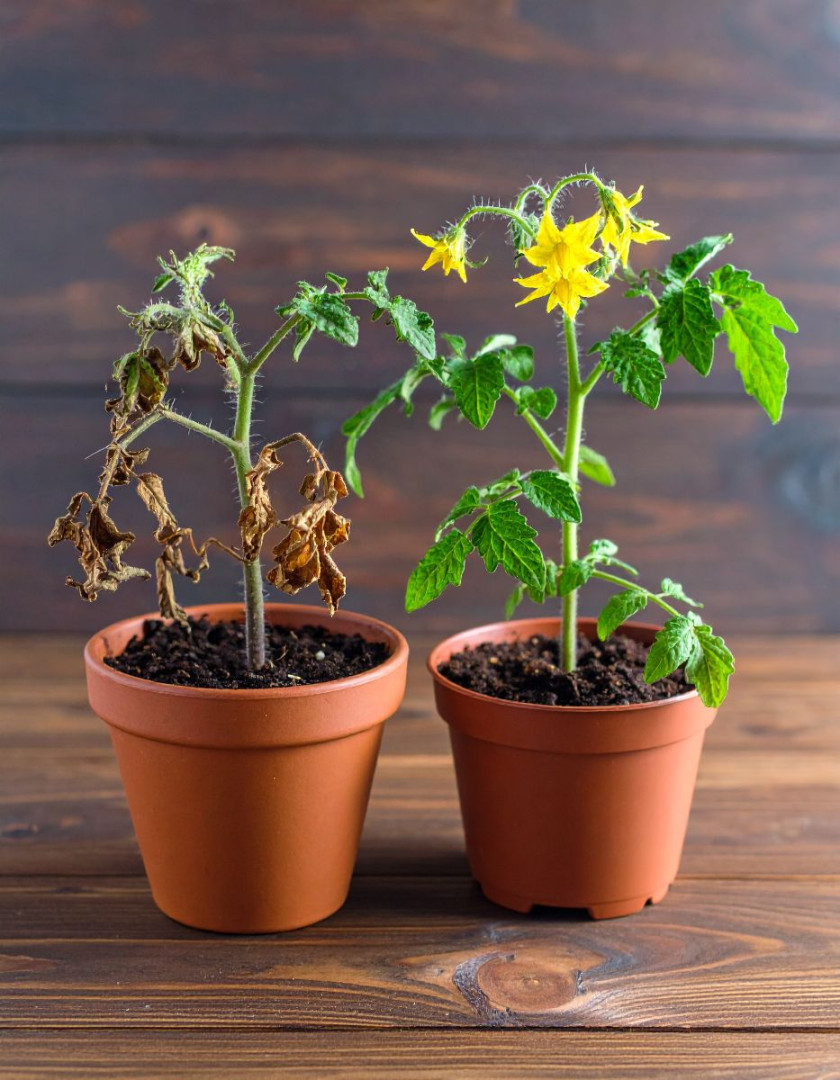However, too much intense sunlight, especially in hot climates, can also stress the plant and lead to wilting. If your plant is in a particularly sunny spot, consider providing some shade during the hottest part of the day. This can be achieved with shade cloth or by strategically planting taller companion plants nearby.
5. Pest Problems: Identifying and Managing Common Culprits
Pests such as aphids, spider mites, and whiteflies can wreak havoc on tomato plants, causing them to droop and wilt. These pests feed on the plant’s sap, weakening it and leading to stress.
Regularly inspect your plants for signs of pest infestations, such as discolored leaves, webbing, or visible insects. If you identify a pest problem, consider using natural remedies like neem oil or insecticidal soap to control the population. Encouraging beneficial insects, such as ladybugs, can also help keep pest numbers in check.
6. Disease Dilemmas: Recognizing Signs of Infection
see continuation on next page
Continued on the next page
continued on next page
ADVERTISEMENT6. Disease Dilemmas: Recognizing Signs of Infection
Tomato plants are susceptible to various diseases, including blight, wilt, and leaf spot, which can cause drooping and other symptoms. Fungal, bacterial, and viral infections can spread rapidly, so early detection is key.
Look for signs of disease, such as discolored spots on leaves, wilting stems, or moldy growth. If you suspect a disease, remove affected plant parts and dispose of them properly to prevent further spread. In some cases, fungicides or bactericides may be necessary to control the infection.
7. Temperature Troubles: How Heat and Cold Affect Your Plant
Extreme temperatures can stress tomato plants, leading to drooping. High temperatures can cause the plant to lose moisture rapidly, while cold temperatures can damage the plant’s cells.
To protect your plants from temperature extremes, consider using row covers or cloches during cold spells and providing shade during heatwaves. Additionally, ensure your plants are well-watered during hot weather to help them cope with the increased evaporation.
8. The Importance of Pruning: Keeping Your Plant Healthy
Pruning is an essential practice for maintaining healthy tomato plants. Removing excess foliage allows for better air circulation and sunlight penetration, reducing the risk of disease and promoting stronger growth.
Regularly prune your tomato plants by removing suckers, which are the small shoots that grow between the main stem and branches. This helps direct the plant’s energy towards fruit production and prevents overcrowding, which can lead to drooping.
ADVERTISEMENT

